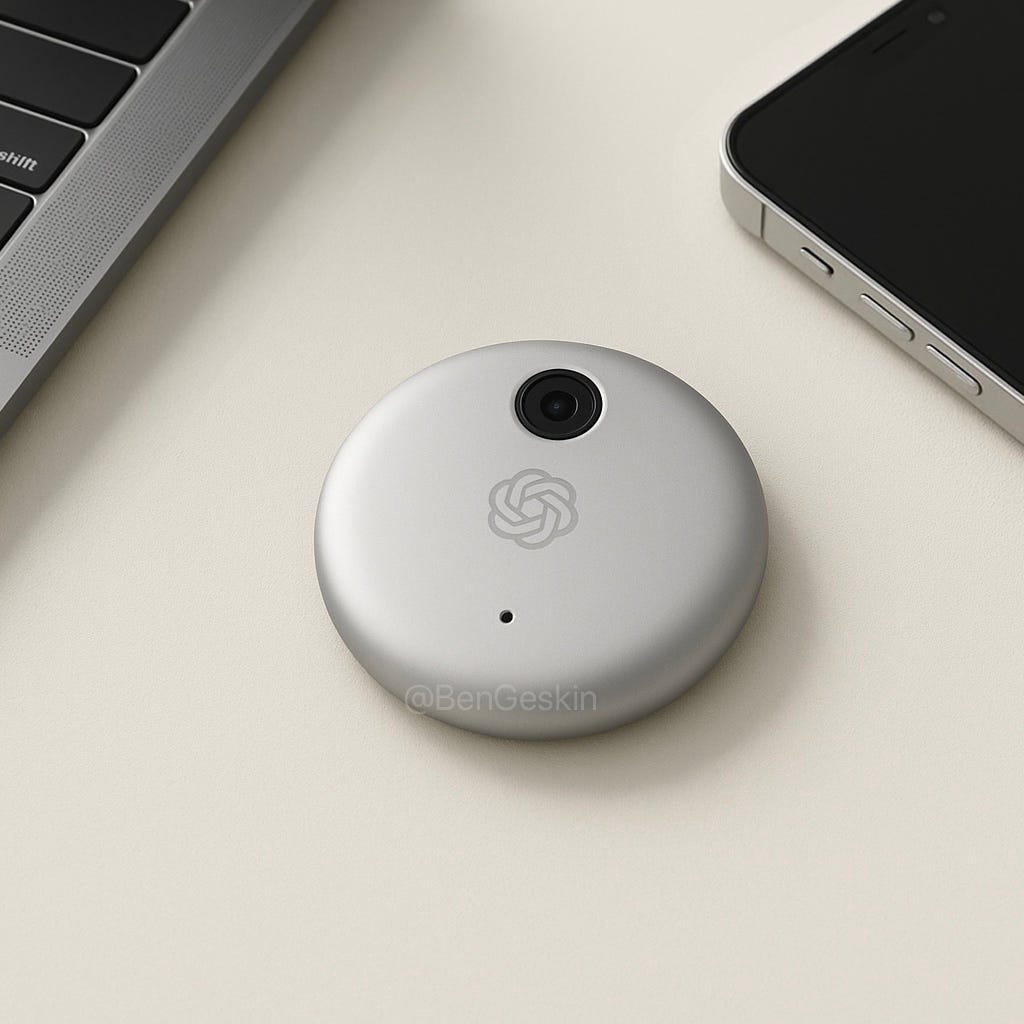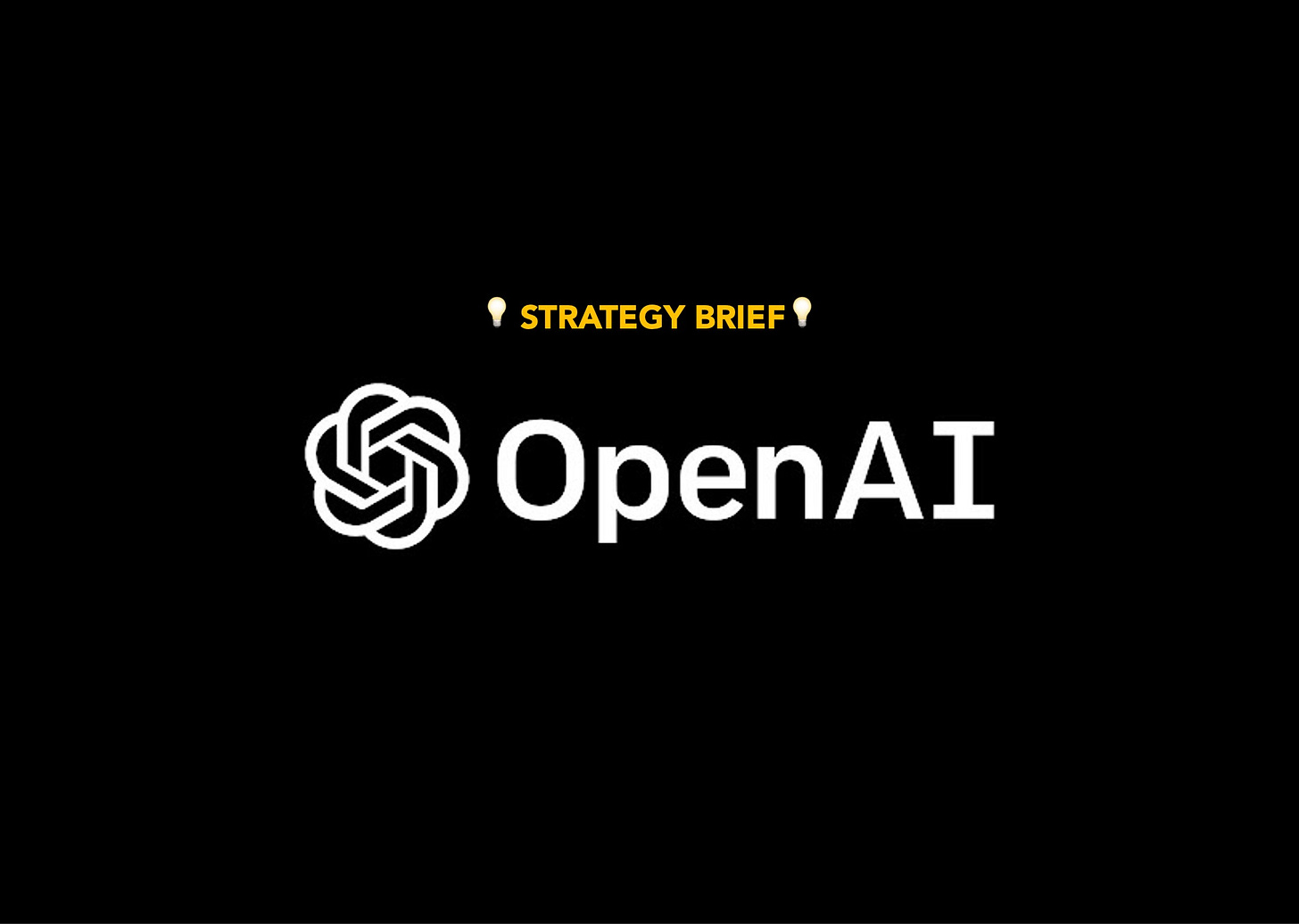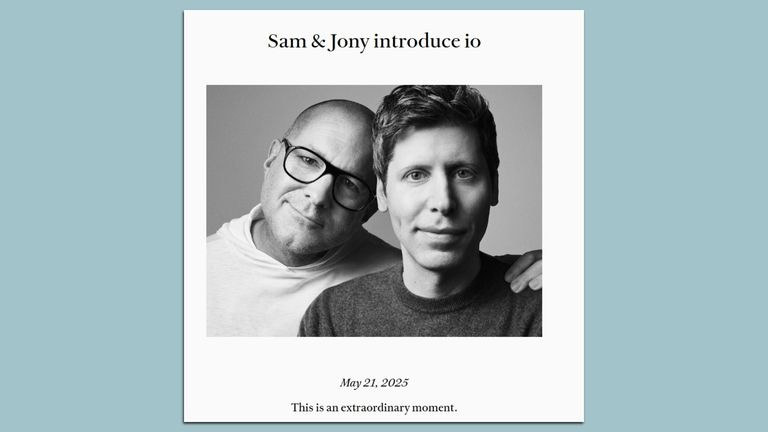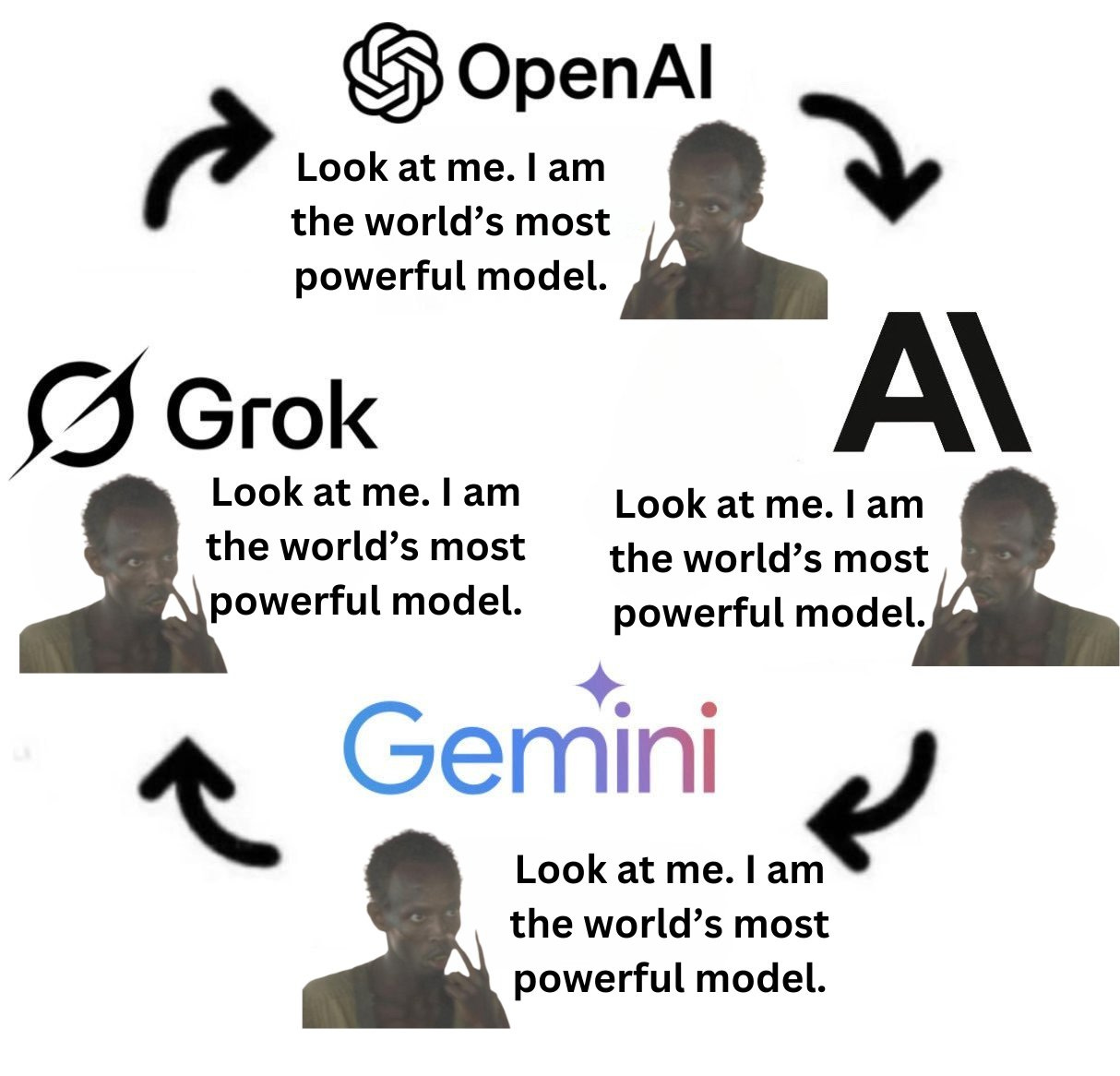Last week, OpenAI announced that it will acquire Jony Ive’s 1 year old start up, io, for $6.5 billion.
Putting aside the rather cringe-worthy 9-minute video of Sam Altman and Jony Ive showing mutual love and affection for each other while revealing nothing of substance, the acquisition is a statement (an expensive one) that OpenAI is moving into the consumer hardware space.
The rumoured product? A pocket-sized, screen-free device that's contextually aware of your surroundings, unobtrusive and will be the third core device a person would put on their desk after a Macbook and an iPhone.

OpenAI's big bet is to recreate that "first iPhone" moment for AI, staking its future on a consumer gadget that could redefine how we interact with technology. The thesis is bold: by controlling how people first meet AI, OpenAI aims to own the interface and experience of this next computing era.
Jony Ive Turns Design Into OpenAI’s Moat
Jony Ive left Apple in 2019 to create his own design collective, LoveFrom. In early 2024 he quietly teamed up with three other senior Apple alumni, Tang Tan (former VP of iPhone product design), Evans Hankey (ex-VP of Industrial Design) and Steve Hotelling (long-time Human-Interface hardware architect), to form a stealth hardware venture called io.
The fledgling company grew to roughly 55 employees, most of them ex-Apple designers and mechanical engineers, but it never shipped a public product. Its sole focus was a screen-less, context-aware AI companion that would replace the tap-and-scroll paradigm with a more ambient interaction model.
OpenAI’s $6.5 billion cash-and-stock deal to buy io was surprising not only for the eye-watering price, about $120 million per employee, but also for its structure. Ive himself will not join OpenAI’s payroll. Instead, he and LoveFrom will serve as ongoing design consultants, while the other three founders and the full io staff become OpenAI employees. In effect, OpenAI is paying a premium for a turnkey hardware team and a standing reservation on Ive’s design ethos, without securing him full-time.
The arrangement is unconventional but telling: Altman appears convinced that Ive’s minimalist, human-centric design language is essential to finally develop an AI gadget that will gain mass adoption after many (see Rabbit & Humane) has flopped. The hefty price tag underscores how urgently OpenAI wants to control the hardware narrative before Apple, Google, or another rival defines the category (there is an alternative explanation that the price tag is to make OpenAI a de-facto for profit company).
Hardware Is OpenAI’s Shortcut to Platform Power
OpenAI's pivot into hardware is about capturing the same advantages that other tech giants achieved by owning their platforms:
Margin Capture: Apple shows how powerful it is to own the hardware people reach for every day. iPhones represent only a minority of global shipments, yet Apple pockets about 85 % of the entire industry’s profits because it charges premium prices and collects a toll on every app or subscription sold through the App Store. OpenAI, by contrast, still depends on API usage and ChatGPT plans, income streams that will come under pressure as rival models get cheaper. Shipping its own device would let OpenAI set the hardware price, bundle paid AI features, and keep the whole checkout instead of handing a 30 % cut to Apple or Google.
Data & Ecosystem Lock‑In (The Kindle/Alexa Lesson): Amazon happily sold Kindle readers and Echo speakers at razor‑thin margins because every ebook purchase and every “Alexa” query fed people back into Amazon’s store—and pumped valuable usage data into its recommendation engine.
Jeff Bezos put it bluntly: “We make money when people use our devices, not when they buy them.”
OpenAI is chasing the same flywheel. If its gadget becomes the microphone or sensor you talk to all day, it will harvest real‑world context that makes the AI smarter and develops comprehensive memory, which in turn keeps you rooted in OpenAI’s ecosystem.
Distribution Freedom (Beating the Gatekeepers): Today every ChatGPT interaction rides on someone else’s rails. On iPhones, OpenAI pays Apple a 30 % App Store tax. Online, it competes with Google, which spends about $20 billion a year to keep Search the default on Safari. Owning hardware is a play for distribution sovereignty, instead of being just another app on an iPhone, OpenAI wants to be the device in your pocket or on your desk that delivers AI. It’s the same logic that drove Google to launch Android (to ensure access to mobile users) and drove Amazon to push Alexa, control the access point, and you control the customer relationship.
In short, OpenAI doesn’t just want to provide great AI—it wants to become your first stop for AI, period.
Why Now?
Several forces have made hardware look timely, perhaps necessary, for OpenAI:
Model Commoditization
The cutting-edge AI models OpenAI pioneered are rapidly becoming widespread. Anthropic's Claude has drawn multi-billion investments, Google's Gemini rivals GPT-4, and Meta open-sourced Llama 2. The moat around pure model quality is shrinking and OpenAI (and all of its competitors) risks commoditization unless it differentiates through owning the user experience.
Soaring Compute Costs
ChatGPT was reportedly costing OpenAI $700,000 daily in 2023. The company spent around $9 billion in 2024, leading to a $5 billion operating loss. OpenAI and partners are pouring money into infrastructure, one report said the "Stargate" data center project will deploy $4 billion worth of Nvidia GPUs by 2026. Moving into hardware is a bid for higher-margin revenue streams to offset eye-watering costs.
Platform Squeeze
For the moment, OpenAI reaches most consumers on hardware it doesn’t own. That works, until the platform owners decide to make their own AI the default. Apple is already rolling out Apple Intelligence, and while it prominently pipes certain queries to ChatGPT under a headline partnership, Apple alone decides when that hand‑off happens and keeps the user relationship (plus any iCloud+ upsell). Google is moving even faster, baking Bard/Gemini directly into Android and Search. As long as OpenAI is a guest inside these ecosystems it enjoys huge reach, but it is one menu toggle away from obscurity. Shipping its own device is the only way to escape that.
Vertical Integration
The pressures outlined above can help to explain why OpenAI has spent the past months on an acquisition sprint. Each deal plugs a gap in the stack, moving the company from a pure‑model vendor toward a vertically integrated consumer platform.
IO Acquisition (Design & Devices)
Windsurf Acquisition (Code). The $3 billion Windsurf deal arms OpenAI with a full in‑browser IDE, auto‑compiler, and deployment pipeline that turn model demos into production software in hours.
Fidji Simo Hire (Execution). Bringing in the former Instacart CEO to run a new consumer division signals that it plans to ship, iterate, and market products at scale.
Viewed as a whole, these moves convert OpenAI to a full‑stack consumer company poised to own the interface, the data, and the economic upside.
The Bottom Line
Apple proved that the fattest margins live where hardware, software, and services snap together; OpenAI is wagering $6.5 billion that the lesson still holds. Jony Ive supplies the hardware charisma, Altman provides the intelligence, and together they’re chasing a single prize: the first touchpoint of the post-phone era.
Will users trust an AI-native company with the device they carry closest, or will Apple, Google, and Microsoft defend their turf before Ive’s next design ships?








It's super interesting to ponder.